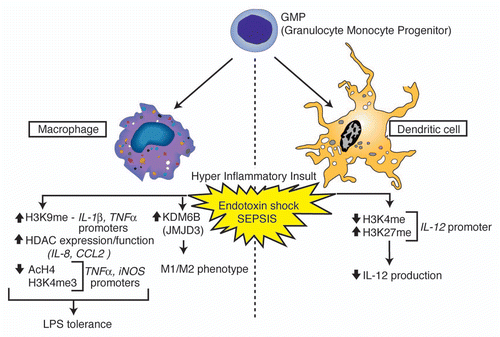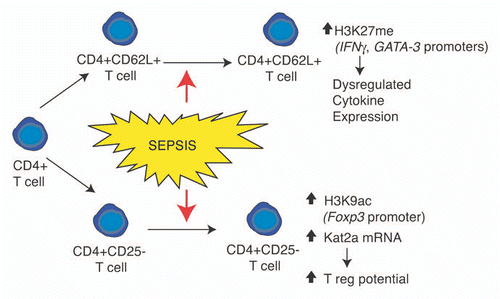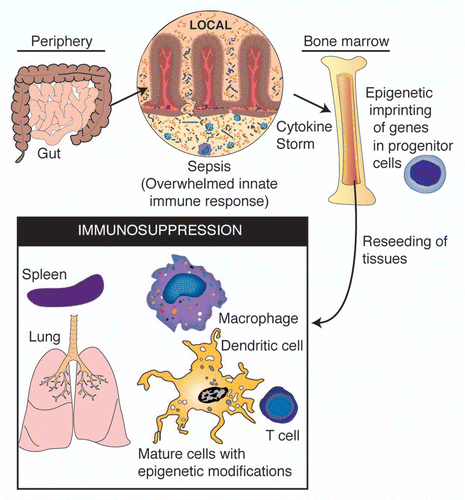Figures & data
Figure 1 Overview of histone modifications and gene regulation events observed in myeloid cells associated with endotoxin shock and sepsis. Phenotypic outcomes associated with the indicated modification events are listed below each cell subtype.

Figure 2 Overview of histone modifications and gene regulation events observed in CD4+ T lymphocyte subsets following severe sepsis. Phenotypic outcomes are listed below the indicated modification events.

Figure 3 A schematic of the proposed feedback system between systemic inflammation and epigenetic imprinting of immune progenitor cells. In such a system, epigenetic modifications occur in progenitor cells during the acute phase of sepsis, resulting in re-seeding of tissues with daughter cells carrying similar histone modifications following recovery from sepsis.
